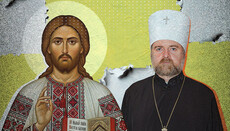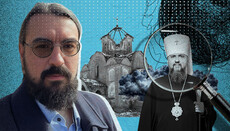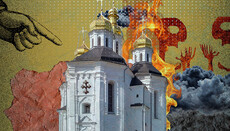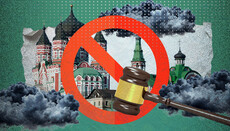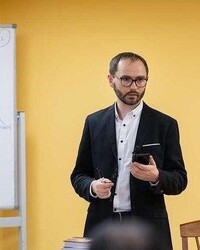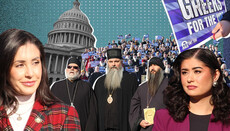OCU and UAOC in the early 1990s: historical parallels of Ukrainian schisms
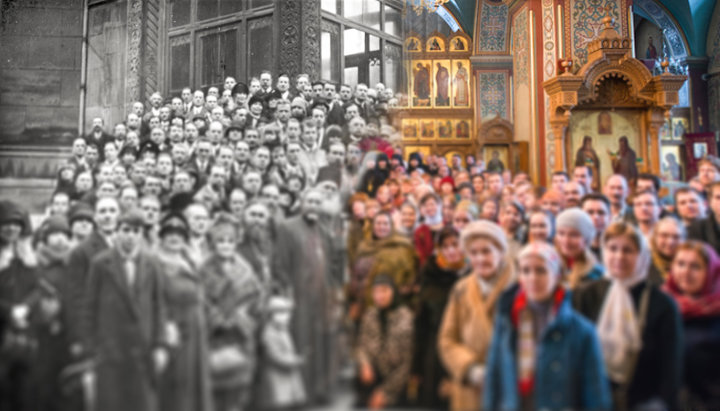
“Parishioners were divided into two hostile camps”: what is common between century-old events around the UAOC and today's realities of the OCU.
“History repeats itself twice: the first time as tragedy, the second time as farce,” said Hegel. The archetypal recurrence of certain events in history made the ancient Greeks believe that history is cyclical and moves in a circle. Biblical historiosophy affirms the linear development of history but at the same time does not deny the essential parallelism of the events of the past, present and future.
For example, the speeches of biblical prophets turn out to be relevant not only for contemporaries but also carry the messianic meaning revealed in the New Testament era. The Apostle Paul, speaking of the life of the Old Testament Israel, notes: “These things occurred as examples…” (1 Cor. 10, 6). Christ says: “As it was in the days of Noah, so it will be at the coming of the Son of Man” (Matt. 24, 37). The Bible shows that, although history has the beginning and the end, certain events in it can really be repeated (not literally, but in meaning), including events in church life.
Today’s schisms, tomos stories, the OCU, the betrayal of higher hierarchs, and violence against ordinary believers – all this has already happened more than once. And how useful it is to know what consequences all these things had for society and what they ultimately led to.
* * *
Today, a quasi-church group in Ukraine has declared itself autocephalous. But it is not the first time it has happened!
Autocephaly of the Ukrainian Church was announced by the government of Simon Petliura in 1919. On January 1, the "Law on autocephaly of the Ukrainian Orthodox Church and its higher government" was adopted. At the end of the month, the UPR government instructed the Ambassador to Turkey Alexander Lototsky to ask the Patriarch of Constantinople for the recognition of autocephaly, but the locum tenens of the patriarchal throne, Metropolitan Dorotheus refused.
Then neither the Central Council, nor the hetman government, nor the Directorate dared to move on. They did not take the criminal steps that the government of Petro Poroshenko made in 2018 – bribery and blackmail, pushing through autocephaly by political manipulation, seizing temples of the canonical Church, etc. The leaders of the then Ukrainian government were smart enough to understand how much trouble such an “autocephaly” would bring to Ukraine.
However, the events of those days are very similar to today’s realities. Upon the return of the Petliura army to Kiev, May 5, 1920, the All-Ukrainian Orthodox Council and activists of the Ukrainian Nationalist Movement again proclaimed the Autocephalous Church in Ukraine. The Council declared all bishops in Ukraine enemies of the Ukrainian people, while they are in communion with the Moscow Patriarchate and Patriarch Tikhon. It sounds awfully familiar, doesn’t it?
Neither the Central Council, nor the hetman government, nor the Directorate dared to move on. They did not take the criminal steps that the government of Petro Poroshenko made in 2018 – bribery and blackmail, pushing through autocephaly by political manipulation, seizing temples of the canonical Church, etc,
To solve the problem of the shortage of the episcopate, the schismatics took a blatant, from the point of view of the canons of the Church, step – “consecration of the bishop” for the UAOC by priests and laymen. Trampling church canons is the handwriting of schismatics of all time. As today, Patriarch Bartholomew informs layman Sergey Dumenko of bishop's grace with just one stroke of the pen, “retroactively,” and removes the anathema from Mikhail Denisenko declared by another Church.
Professor M. Sadylenko in his book “Sad Consequences of Lypkivsky’s Legacy” wrote that the Church Council, which had declared autocephaly, included many laypeople who, until then, had not taken part in church life and were not even interested in it. Similarly, today some "activists" and "patriots" who are not related to the liturgical life of the Church are trying to solve church issues.
Sadylenko writes about the church turmoil that arose in Ukraine in connection with the emergence of a new schism: “’The servants of the Church of Christ’ prevailed against each other, assured that only they were true clergy, put pressure on the political and patriotic consciousness of believers, tried to seizure more parishes, brought schism into the Church, clouded the heads of believers, forgetting that the faith of Christ is a faith of harmony, brotherhood, and love.”
How could we not recognize in these words the actions of contemporary schismatics?
The same author notes the incredible lies of the then media about the number of bishops, priests and parishes of the UAOC: “The even more incredible is the unlikeliness of the number of bishops, priests and parishes of Lipkovsky’s ‘Church’, which is presented by journals. P. Vasilenko-Polonskaya writes that in 1927 there were 95 bishops and 10,657 priests in this ‘Church’. Prof. Doroshenko counts 2,000 parishes, and Prof. Zavitnevich in the same article mentions both 30 and 28 bishops, and thousands of parishes (“Our Century”, 1951, part 13, Toronto). Here is another statement: "At the end of 1926, the Ukrainian Autocephalous Orthodox Church included 32 bishops, 3,000 priests, and 2,160 church parishes with about 6,000,000 active parishioners."
How familiar it sounds! For example, Ukrainian “Wikipedia” tells tales of more than 500 communities that voluntarily moved to the OCU. But even the most cursory check shows that this number includes seized churches and reports of the transfer of communities to another jurisdiction are based on brief notes of provincial "patriotic" newspapers.
Or, for example, Sergey Dumenko himself declares that the OCU consists of 7,000 parishes, 77 monasteries, 47 eparchies. Pro-OCU Internet resources immediately echoed this information and spread it over the Web. However, it is impossible to find any concrete facts. What 77 monasteries, where they are situated, how many monks labor there – a total mystery. The list of 7,000 parishes is also, of course, missing.
However, these details are not the most important thing. The main essence of the schism is the division of Ukrainian society, both at that time and now. And the professor writes about this with bitterness and pain in the same book.
“Parishioners were divided into two hostile camps. Representatives of the ‘new Church’ were supported mainly by the Bolshevik part of the parishioners, although it was less numerous but more active, which tried to seize the church by force. Often before the church service, there were not only discussions but also fights. The most active were women. Right from the marketplace, with baskets, they came under the church; verbal ‘battle’ began, and then baskets, potatoes and all sorts of other things, and often the hair of ‘fighters for faith’, flew in the air. The defeated with shame left the battlefield, and the victors triumphantly introduced their father and solemnly ‘inthronized’ him in his new position. Indeed, believers who wanted to pray went a dozen kilometers to the church where a real priest ministered.”
It seems that these words can be placed in modern news reports, with the phrase "new Church" replaced for the OCU. Exactly the same thing is happening now in Ukrainian villages, where aggressive "activists" beat and insult fellow villagers, taking away their temples.
“Wikipedia” tells tales of more than 500 communities that voluntarily moved to the OCU. But even the most cursory check shows that this number includes seized churches and reports of the transfer of communities to another jurisdiction are based on brief notes of provincial "patriotic" newspapers.
Historical coincidences are not surprising – after all, the internal essence of the Ukrainian schism has not changed in 100 years. Both then and today, the schism absorbs the worst that is in Ukrainian society: nationalism, xenophobia, Russophobia, exorbitant pride, ignorance, stupidity and shortsightedness, godlessness, materialism, pagan worldview, various anarchist elements, etc.
And I think: on the one hand, a split is always a tragedy. But on the other hand, there is a certain process of Church sanitation because all the dirty and stinking things drain into the Ukrainian schism like into the sewer. Perhaps, that is why God allows all kinds of schisms and heresies in the history of the Church.
We do not want to say that there are only “bad people” in the OCU. No, people are generally the same everywhere. But the spiritual and worldview message of the Ukrainian schism is destructive.
The essence of any schism is pride, always hiding behind some good things: patriotism, love of folk traditions, the desire for freedom and independence, the desire for justice, etc. But the disgusting grimace of the devil invariably hides under the beautiful wrapping. Any schism is separation, enmity, tears and blood both 100 years ago and now.
* * *
The Church prays for the healing of schisms and the spiritual unity of Orthodox Christians. But obviously, we need to go through some difficulties that are according to our mistakes and sins. In all these events, the main thing is to save the soul. And considerable help in choosing the right path will be given by the study of church history. Those events that are archetypally repeated over and over on the earthly path of the Church ...

